

Journal of Medical Sciences and Health
DOI: 10.46347/jmsh.2018.v04i02.002
Year: 2018, Volume: 4, Issue: 2, Pages: 11-17
Original Article
Mohammed Babiker1,2, Tarig Abbas2, Mohammed Elimam Ahamed Mohammed3,4*, Assad Ali Rezigalla5
1Departement of Clinical Biochemistry, Faculty of Medicine, King Khalid University, Abha, Kingdom of Saudi Arabia,
2Faculty of Medicine, University of Al Neelain, Khartoum, Sudan, 3Department of Chemistry, Faculty of Science, King Khalid University, Abha, Kingdom of Saudi Arabia,
4Sudan Atomic Energy Commission, Khartoum, Sudan, 5Department of Basic Medical Sciences, College of Medicine, University of Bisha, Kingdom of Saudi Arabia
Address for correspondence:
Mohammed Elimam Ahamed Mohammed, Department of Chemistry, Faculty of Science, King Khalid University, Abha, Saudi Arabia. Phone: +966507559790. E-mail: [email protected]
Background:
This article aims to investigate the effect of gum Arabic dose with or without insulin on the expression of antioxidant and liver enzymes and the concentration of malondialdehyde (MDA), reduced glutathione (GSH), direct bilirubin, total bilirubin, albumin, and total proteins.
Materials and Methods:
This study was composed of five groups, Group 0 as control group (injected citrate buffer only), Group 1 was diabetic (treated with streptozocin), Group 2 was diabetic and treated with insulin, Group 3 was diabetic treated with gum Arabic, and Group 4 was diabetic treated with gum Arabic and insulin. However, each group involved 10 Sprague-Dawley rats. The ELISA techniques were used to determine the concentration of the oxidative stress parameters. The liver function test’s parameters were measured by a spectrophotometer.
Results:
The gum Arabic is an effective antioxidant factor, but it has some negative effects on the liver function test parameters.
Conclusion:
The combined or dual dose of insulin and gum Arabic is better than the insulin or gum Arabic alone as an antioxidant factor for the treatment of diabetic rats.
KEY WORDS:Diabetic Sprague-Dawley rats, gum arabic, insulin, liver function, oxidative stress.
Diabetes mellitus is well known to be accompanied by oxidative stress through altered oxidative enzymes expression, the concentration of antioxidant vitamins and minerals, and lipid peroxidation. However, most of the diabetes mellitus complications are due to the oxidative stress conditions.[1] Many studies have recommended the uses of antioxidant therapy besides the classic treatment strategy.[1] Golbidi research group concluded that the use of antioxidants as an adjuvant to the standard diabetes mellitus treatment has no benefit in the management of diabetes mellitus.[2-4]
The gum Arabic is considered as an antioxidant due to its content of four antioxidant minerals copper, iron, manganese, and zinc and due to its positive effect on the expression of the antioxidant enzymes.[5,6]
It is registered that insulin dose decreased the blood concentration of MDA and GSH peroxidase in whole blood and decreased the concentration of superoxide dismutase (SOD) in the red blood cells of humans.[7] Other studies concluded that the insulin therapy normalized the activity and expression of antioxidant enzymes (SOD, catalase [CAT], and GSH peroxidase) in the liver of Sprague-Dawley rats by increasing their activity and expression.[8] The two studies summarize that the insulin affects the expression of the antioxidant enzymes positively and negatively.
Gum Arabic dose increased the hepatic insulin resistance through minimizing the glucose infusion rate, and it did not affect the hepatic glucose output in streptozotocin-induced diabetes in rats.[9] However, the glucose infusion rate measures the response of living bodies to a load of glucose while the hepatic glucose output is the release of glucose from the liver to the blood. The results of this study illustrated the negative effect of gum Arabic on the liver. However, other studies stated that the gum Arabic has a protective effect on the liver through reducing the blood level of liver enzymes; alanine transaminase (ALT), aspartate transaminase (AST), and alkaline phosphatase (ALP) and through decreasing the oxidative stress.[10]
This study aims to investigate the effect of gum Arabic and insulin alone and together on the concentration of hepatic antioxidant enzymes (SOD and CAT, malondialdehyde [MDA], reduced glutathione [GSH]). Furthermore, this study investigated the effect of insulin and gum Arabic alone and together on the liver function blood tests (direct bilirubin [DB] and total bilirubin [TB], total proteins, and albumin and liver enzymes including the AST, ALT, and ALP).
Study subjects
This study involved five groups of Sprague-Dawley rats. Each group was composed of 10 rats. Four groups were rendered diabetic by streptozocin treatment (single intraperitoneal injection with 65 mg/Kg in 0.1 M citrate buffer with pH of 4.5), and one group was considered as a control group (Group 0 - injected citrate buffer only). The diabetes was confirmed by non-fasting blood glucose concentration of ≥20 mmol/L. Group 1 was considered as untreated diabetic group (the diabetic rats were not treated with insulin nor gum Arabic), Group 2 rats were treated with insulin (single daily dose of 17 IU/Kg), Group 3 rats were treated with gum Arabic (daily dose of 1 L of 10% gum Arabic solution), and Group 4 rats were treated with a combined therapy of insulin and gum Arabic (17 IU/Kg single daily dose of insulin for each rat and 1 L of 10% gum Arabic solution for all the members of the group).
This study was conducted through 12 weeks at the animal house and the biochemistry laboratory at the faculty of medicine - King Khalid University.
Study design
Depending on the method followed by this study, it can be classified as quantitative and true experimental research.
Ethical clearance
This study was implemented after an ethical license was obtained from the ethical committee of the faculty of medicine - King Khalid University - Saudi Arabia. The ethical approval was given the number REC 2014-8-14.
Sample collection and treatment
5 ml of retro-orbital blood sample was obtained from each rat by the end of the 12th week. The blood samples were collected to measure the liver function test parameters. After the collection of the blood samples, the rats were killed by decapitation, and the liver was dissected and washed with phosphate buffered saline (PBS) with pH of 7.4. The PBS contained 0.16 mg/ml of heparin to remove any erythrocytes and clots.
100mg of each liver tissue was collected to determine the concentration of the oxidative stress parameters. The liver tissues were divided into four parts, and each part was treated according to the instructions of the oxidative stress parameter producing company.
Methods
The liver function test parameters concentration was determined according to instructions of the producing companies as follows; albumin (Albumin liquicolor REF 10560 - Human - Germany), total proteins (Total protein liquicolor - REF 10570 - Human - Germany), bilirubin (bilirubin D+ T liquicolor - Human - Germany), AST (aspartate aminotransferase - REFEC2.6.1.1 - Human - Germany), ALT (alanine aminotransferase - REF EC 2.6.1.2 - Human - Germany), and ALP (ALP liquicolor - REF EC 3.1.3.1 - Human - Germany).
The oxidative stress parameters concentration/ activity was determined following the manufacturer’s instructions. The CAT activity was determined using the CAT assay kit of Abcam - ab83464. The SOD activity was measured according to Cayman chemical-item number 706002. The Abcam assay kit number ab118970 was used for the determination of the MDA concentration and the GSH concentration was determined according to the instructions of SIGMA-ALDRICH - GSH assay kit - catalog number CS0260.
The obtained results were analyzed by SPSS version 20. The mean values of the parameters of the two groups were analyzed using ANOVA test.
Results
The mean value of the non-fasting blood glucose concentration in Group 0 (non-diabetic was 73.3 mmol/l, and it increased in Group 1 (diabetic rats) to 406 mmol/l. Treatment of diabetic rats with insulin lowered the mean blood glucose from 406 to 129.4 mmol/l. The gum Arabic is not so effective in lowering the mean blood glucose since it decreased the mean from 406 to 347 mmol/l (the non-diabetic blood glucose is < 200 mmol/l). The dual dose of insulin and gum Arabic is more effective in lowering the mean blood glucose concentration; it decreased the mean blood glucose from406 mmol/L in non-treated animals to 98.7mmol/L with dual treatment [Table 1 and Figure 1]. The comparison of the mean glucose concentrations in the five groups showed that there was significant variation between Group 0 (control) and all the groups except Group 4 (insulin and gum Arabic dose) (P = 0.129). The non- significant difference between Group 0 and Group 4 means that treatment with insulin and gum Arabic recovered the mean blood glucose to its normal range [Table 2].
Similar to the glucose pattern, the mean MDA concentration (an indication of lipid peroxidation level) in the liver increased in the diabetic rats, decreased in the insulin-treated diabetic rats, decreased in the gum Arabic-treated rats, and decreased to near its mean concentration in the control rats in the combined insulin and gum Arabic dose. There was no significant variation between the MDA concentrations in Group 4 (insulin and gum Arabic-treated rats) and Group 0 (control) (P = 0.2) [Table 1 and 2 and Figure 2]. The mean activity of CAT and SOD and the mean concentration of GSH decreased in Group 1, increased by insulin, gum Arabic, and the dual insulin and gum Arabic dose. However, the dual dose increased the mean values of CAT, SOD, and GSH to their mean values in the control group. The dual dose caused the highest increase in the mean values of CAT, SOD, and GSH to their mean values in the control group [Table 1 and 2 and Figure 2].
The results of the liver function test parameters were summarized in Table 2. The mean values of the DB and TB were insignificantly increased in the diabetic rats compared to their mean levels in the control group [Table 1 and Table 2]. The gum Arabic, insulin, and the dual dose insignificantly decreased the mean values DB and TB [Table 1 and Table 2 and Figure 3].
The mean albumin and total proteins concentrations were significantly decreased in the diabetic rats compared to the control rats. The insulin, gum Arabic, and the dual dose of insulin and gum Arabic increased the mean values of albumin and total proteins to their mean values in the control group [Table 1 and Table 2 and Figure 3]. About the liver enzymes, the ALP, ALT, and AST were significantly increased in the diabetic rats compared to the control rats [Table 1 and Table 2]. The insulin, gum Arabic, and the combination of insulin and gum Arabic decreased the mean values of ALT and AST to their values in the control group except for the AST which was far away from its mean value in the control rats [Table 1 and Table 2 and Figure 3]. All the three intervention types did reverse the effect of diabetes on the biliary liver tract since they did not decrease the mean AST value to its mean value in the control group [Table 1 and Table 2 and Figure 3].
Regarding the effect of gum Arabic on the glucose concentration in diabetes mellitus, we have registered insignificant decrease in the random blood glucose concentration in rats. Our result is similar to the result of Nasir who concluded that the non-fasting blood glucose was insignificantly decreased during gum Arabic treatment in mice.[11,12] Other studies concluded significant blood glucose concentration decrease after gum Arabic treatment in mice and Indian human subjects.[13-15]
The oxidative stress parameters (CAT, SOD, GSH, and MDA) were studied by the research group of Ahmed AA in three groups of rats. The three groups were normal, diabetic induced by alloxan, and diabetic treated with gum Arabic. Ahmed AA study registered the significant effects of gum Arabic in changing the activity of CAT and SOD and the concentration of GSH and MDA.[10,16] However, our study found the same results regarding the effect of gum Arabic on the studied oxidative stress parameters. Unlike most of the previous studies, Aly et al. registered increased blood MDA concentration by the treatment of Swiss albino mice with gum Arabic.[17] Other study found that the gum Arabic is effective as an antioxidant in sickle cell anemia in human subjects by decreasing the MDA concentration and increasing the total antioxidant capacity.[18]
Concerning the effect of gum Arabic on the blood concentration of bilirubin, Pal study stated that the TB concentration in rats increased by the use of Acacia Senegal pod extracts; however, the TB concentration decreases with the increase of the gum Arabic extracts doses.[19] Our study revealed that approximately a 10 g daily dose of gum Arabic significantly decreased the DB concentration and insignificantly decreased the total bilirubin concentration in the blood of Sprague-Dawley rats.
Our results showed the significant effect of gum Arabic in increasing the concentration of albumin and total proteins to their normal values when treating the diabetic rats. However, the combined insulin and gum Arabic dose was more effective in ameliorating the effect of diabetes. Unlike our finding, it is registered that injection of acacia gum in dogs, Balb/C mice, and broiler chicks led to the low level of blood proteins.[20-22] However, previously, Mohammed Babiker indicated that the treatment of normal rats with gum Arabic slightly increased the blood concentration of albumin and total proteins.[6]
We have indicated that Arabic gum dose significantly reduced the blood activity of liver enzymes AST, ALT, and ALP. The effect of gum Arabic in reducing the liver enzymes activity was less than the reducing effect of insulin alone or the combination dose. However, the combined dose was the more effective in minimizing the activity of the liver enzymes. Ahmed study revealed that the gum Arabic significantly decreased the activity of liver enzymes.[10] Tabidi and Kamal, in 2015, found that gum Arabic reduced the ALP activity in broiler chicks.[22]
Four conclusions can be derived from this study; first, the gum Arabic can be considered as antioxidant therapy, but it is associated with increased bilirubin concentration, and it is not useful in minimizing the blood concentration of glucose and AST. Second, the dual dose of insulin and gum Arabic is efficient in reducing the concentration of the blood glucose than the insulin in the diabetic rats. Third, the combined insulin and gum Arabic is more efficient as antioxidant therapy for the diabetic rats than the insulin or gum Arabic alone. Finally, the dual dose of insulin and gum Arabic has no protective effect on the biliary duct since it did not normalize the blood mean ALP activity.
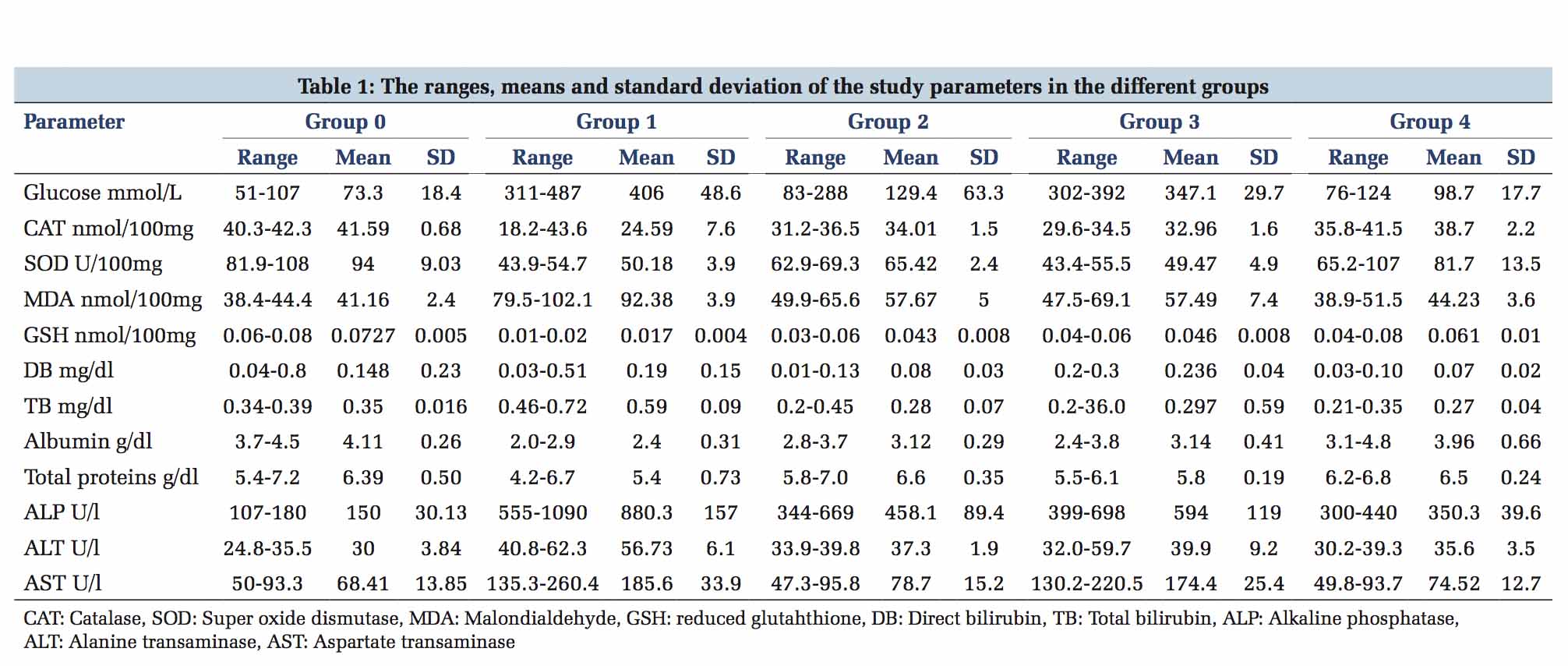
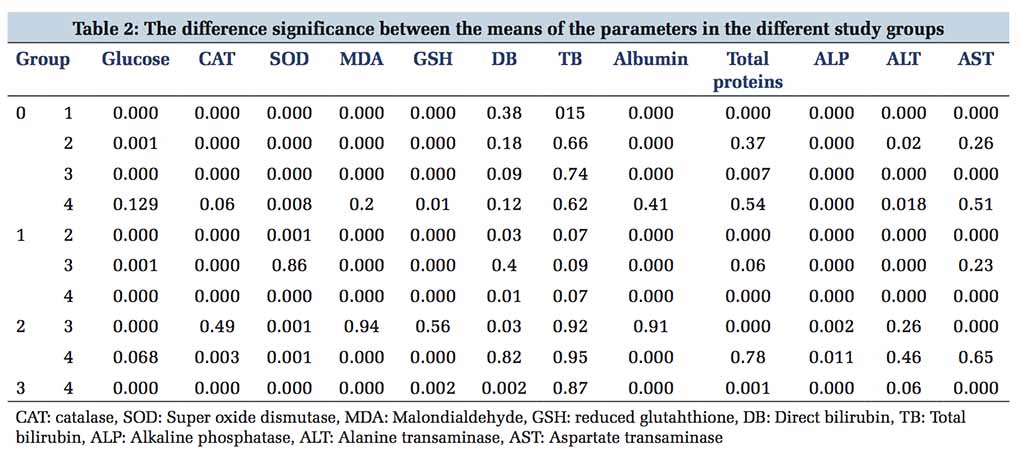
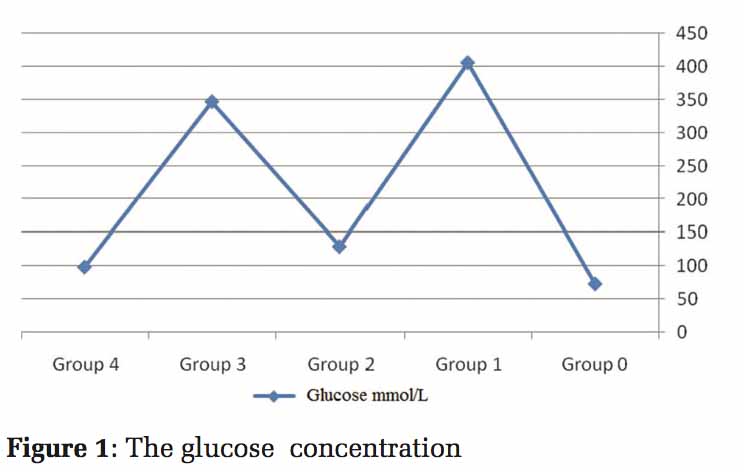
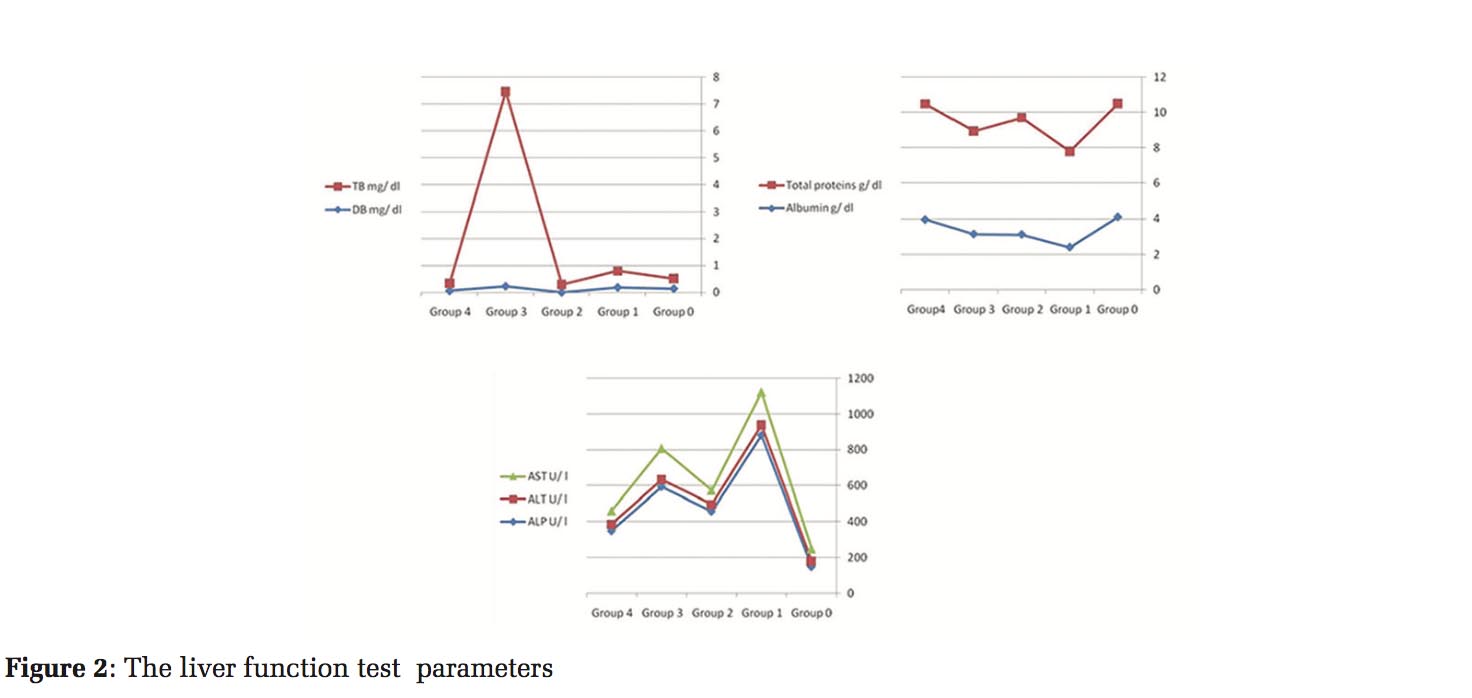
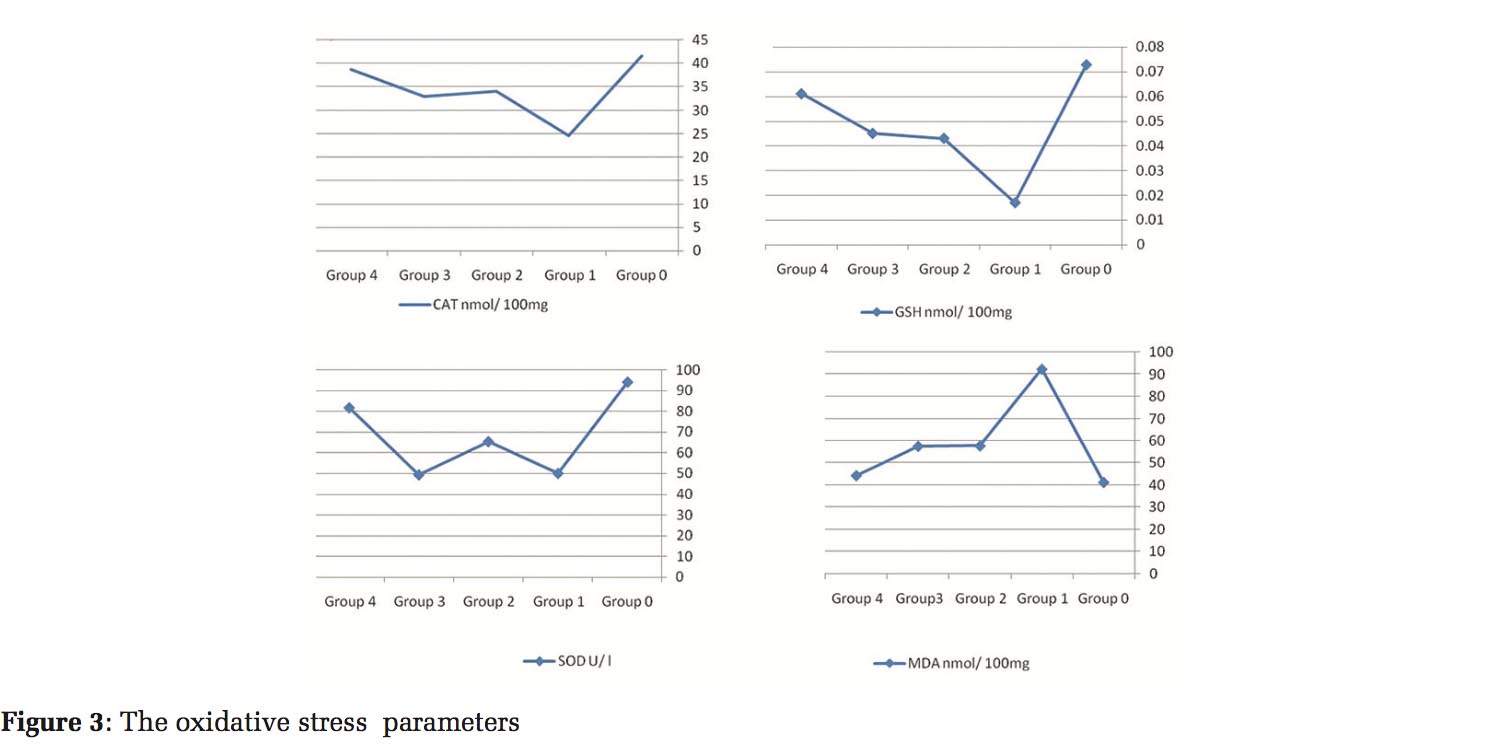
The authors gratefully acknowledge the use of the services and facilities of the college of medicine, King Khalid University. This research was supported by Deanship of Scientific Research at King Khalid University, grant number R.G.P.1/7/38.
Subscribe now for latest articles and news.